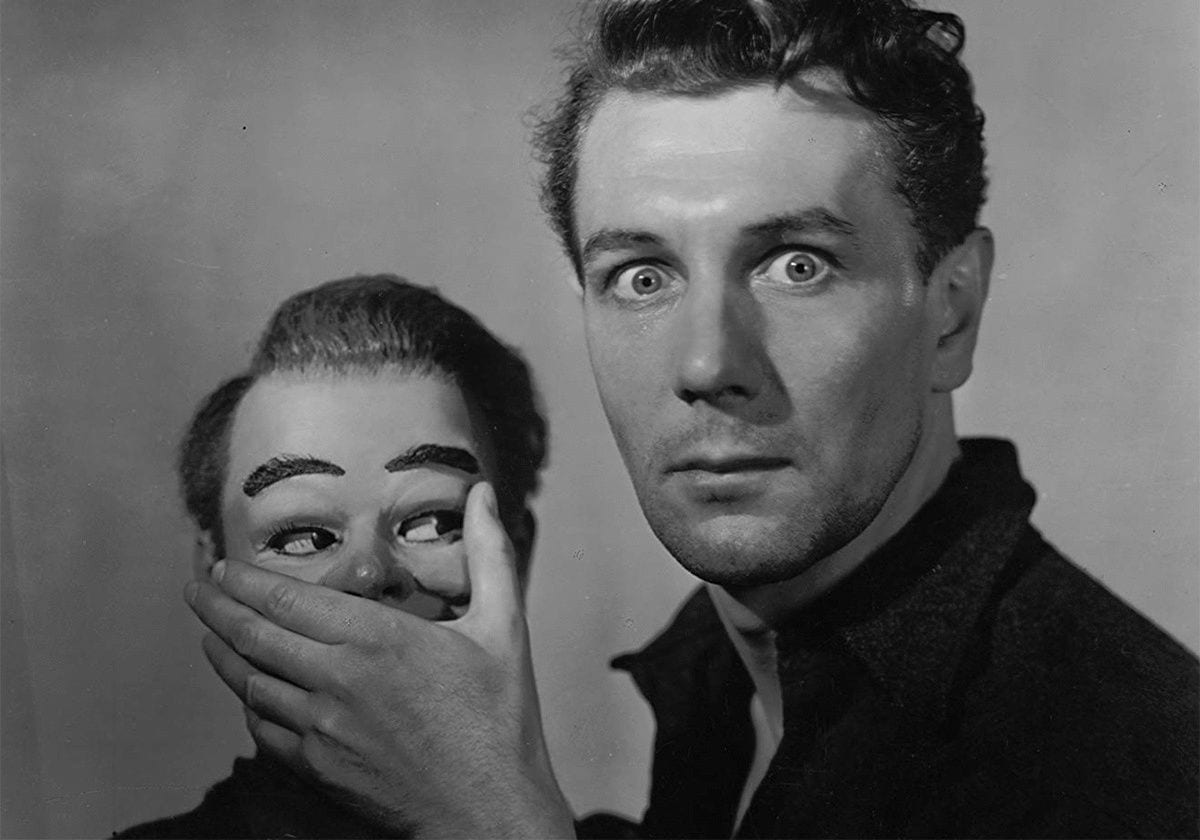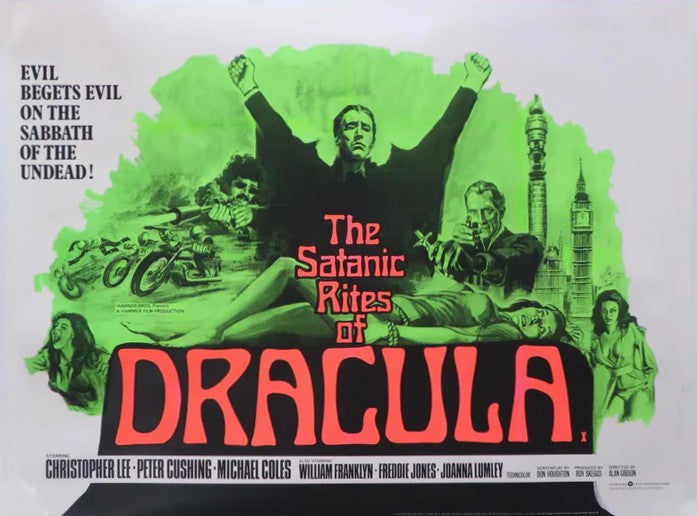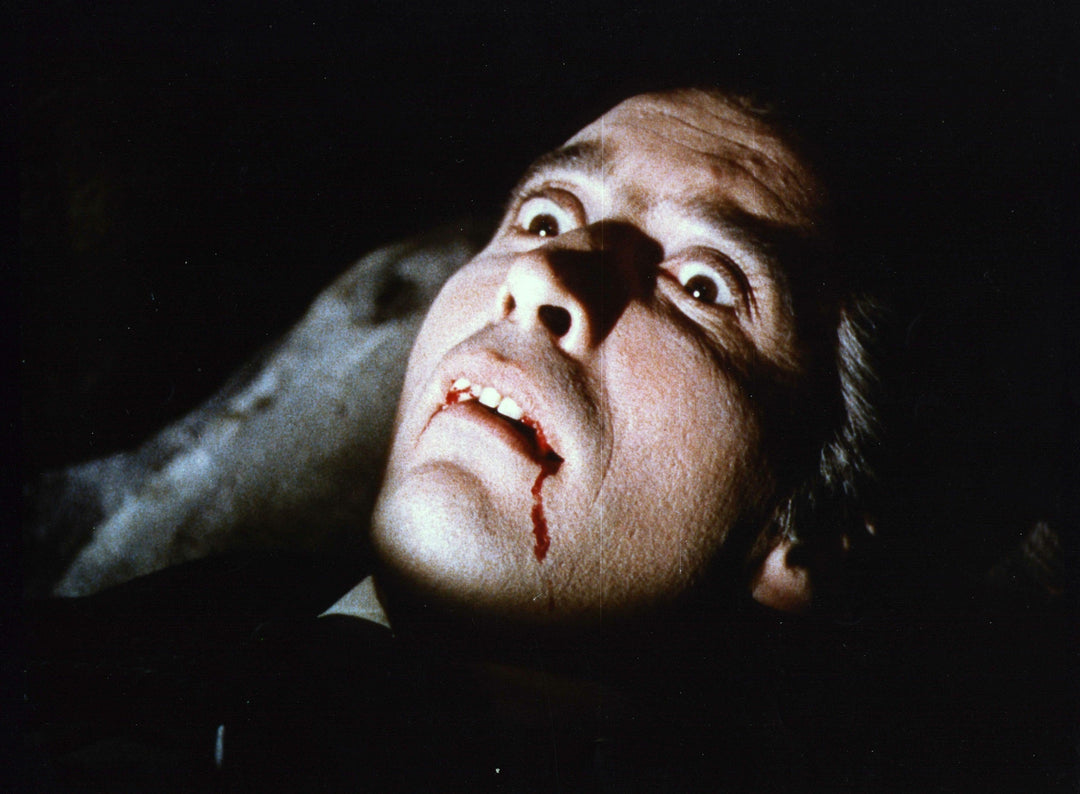Beat the Summer Blues with these 9 Overlooked Horror Films…

Summer is coming, with all its attendant horrors. Having to look at a colleague’s sunburnt forearm and pretend it’s ‘a really great tan’. Gridlock on any road within 12 miles of the ocean. Summer hair. Grown men wearing too-short shorts and those garish, faux Hawaiian shirts that even Magnum couldn’t get away with, all in an attempt to say, ‘Hey, I’m a fun guy!’ And the weather itself. There’s a reason why Hell is routinely depicted as a place with no air con and the temp cranked to max. And every summer, we’re reminded what that reason is.
So what better time to close the curtains, hunker down and stick on some horror movies to banish those summer blues? And if you need ideas about which films to watch, read on for a coffin-load of suggestions…
We’ve picked out some overlooked titles, which isn’t to say unknown titles, to get you underway. These are a few films that don’t get the love they deserve, but we reckon are worth checking out, or in some cases, re-checking out. We confined our list to a single Hammer title and went for anything, from 1940s light frights to J-horror and serial killer pictures from the 60s, 70s and 80s. So, in no particular order, why not get your summer started with…

The public’s appetite for Goddard and Hope meant they starred in three pictures together in three years. The Ghost Breakers was the second in this run.
The Ghost Breakers (1940)
Think Bob Hope and Paulette Goddard and your first thought is probably The Cat and the Canary (1939) which is fair enough. That’s a zinger of a film with a great cast, jump scares galore and some nice gags – not least the twist at the end where ‘our hero’ reveals how he solved the case.
But their lesser spotted The Ghost Breakers is arguably the better film, not least because Goddard is on totally sizzling form. The fun opens with New York in the grip of a power cut whilst an electric storm rages over the city. Her character – Mary Carter – stands at her hotel window, high above Manhattan, takes in the unique view and enthuses, ‘Exciting, isn’t it?’ If nothing else, just watch that one moment to understand everything about her character. She has a huge passion for danger and the unknown, and her infectious joy in these elements is part of the movie’s delight.

Marketing material for The Ghost Breakers, which opened in June, 1940.
Hope has plenty of patter but the story never descends into farce, and for once he plays a hero with backbone and enough cynicism and self-interest to make him stand out from his usual ‘goofball’ characters. There’s a scary old house, a zombie threat, an ancient curse and a bunch of other horror tropes thrown in for good measure, but who cares? Director George Marshall was clearly shooting for broad entertainment as opposed to subtlety, and in that regard, he scores a bullseye.
It should be noted, though, that like many films of the era, certain depictions are handled badly, especially the character of Alex, played by Willie Best, whom Hope called ‘one of the finest actors I’ve ever worked with.’
The New York Times declared, ‘Paramount… has found the fabled formula for making an audience shriek with laughter and fright at one and (as the barkers say) the simultaneous time.’ Spot on.
It was reportedly one of the movies that inspired Dan Ackroyd when he co-created Ghostbusters (1984) and for that reason alone, plus Goddard’s performance and the whole horror hokum it revels in, it’s definitely worth breaking out The Ghost Breakers.

If you’re cast as a lawyer in a Hammer production… Be afraid! Daniel Radcliffe stars in The Woman in Black.
The Woman in Black (2012)
Some movies are defined by their sense of atmosphere but achieving a consistency of tone, when it’s crucially important, can be a tricky balancing act. The wrong grading, a misstep with music or single dud narrative beat can skew the whole feel of a film, leaving the director’s best intentions to crumble like Dracula in the sunlight.
Hammer’s The Woman in Black gets the sustained mood of dread and horror dead right and delivers 90-minutes of disconcerting drama. It stands as an assured, ambitious work. At the time of its release, the Scream franchise had recently been revived with Scream 4 (2011), and audiences expected gratuitous gore and high body counts. They held a kind of meta, knowing awareness of the memes and mechanics that a horror flick generally employed. But The Woman in Black rejects this familiar (albeit perfectly valid) approach and goes for psychological frights, an old fashioned ghost story and the idea that a character’s fears can be the scariest thing of all.
Daniel Radcliffe, fresh out of Hogwarts and playing the lead, Arthur Kipps, won most of the plaudits when The Woman in Black haunted cinemas. But Jane Goldman’s screenplay deserves praise, taking Susan Hill’s novella and transforming it into a truly unsettling story that would have rattled M.R. James. Don’t expect a fast-moving extravaganza, but even in the hottest moments of summer, this atmospheric movie will deliver chills aplenty.

Perkins observed that Norman’s self-knowledge in the sequel made it a sadder film than its predecessor, a quality reflected in its score which he described as ‘strange and rather beautiful’.
Psycho 2 (1983)
Anthony Perkins is back as Norman Bates, returning to the ultimate no-tell motel after 22 years away. Hitchcock’s original was about the danger of not letting go and this sequel, directed by Richard Franklin, explores the same theme. Bates wants to move on, and his early attempts, his hopeful good humour, kindness and innocent resolve actually persuade us to root for him, making what happens next all the more heartbreaking and horrifying. Other people not wanting to move on, or perhaps unable to leave the past well enough alone, pave the way for tragedy.
Perkins initially turned down the chance to reprise his most famous role (Christopher Walken was considered as a replacement) but after reading the script, he relented and absolutely nails the (literally) reformed killer. The film has plenty of nods to the original’s director but isn’t afraid to reframe and develop the story told in Psycho (1960). Is it as good as Norman’s first outing? Nope. Then again, relatively few films are. But Franklin’s plans to create an engaging, thoughtful and at times terrifying sequel thankfully went without a hitch.

(l-r) Naunton Wayne, Peggy Bryan and Basil Radford are all about the ghosts and golf in Dead of Night’s penultimate story.
Dead of Night (1945)
The horror genre boasts a number of fabulous portmanteau films but the earliest and most influential is amongst the best. An architect arrives at a country cottage and realises he somehow possesses a strange, eerie foreknowledge of how events will unravel. Guests at the property are sceptical, but as they each tell a story that’s special to them, it becomes clear the new arrival is more than he appears. Their recollections, of course, are the bread and butter of the film. Five stories of horror that make this a smorgasbord of ghoulish delights.
The most famous segment is the one about the evil ventriloquist’s dummy. That’s the dummy that’s evil. Not the ventriloquist, played by Michael Redgrave, whose inexorable slide into insanity is one of the movie’s highlights. But there’s plenty more to enjoy – the opening story is like Final Destination (2000) produced by post-war Ealing and the section known as The Christmas Party is spooky as only spooky children can be. Even the tale that’s often dismissed as the weakest, a whimsical, ghostly account featuring the sublime pairing of Basil Radford and Naunton Wayne, is well worth another look. Yes, they’re basically playing Charters and Caldicott (again!) but it’s a charming little break from the more sinister segments and can anything with that double act ever be skippable? Never, we say!
Dead of Night went on to influence countless films, and even television series, most notably Inside No. 9.
Martin Scorsese placed the work in 5th place on his list of the scariest horror films ever made, and back in 1946, critic James Agee wrote, ‘... its famous last shot, whether one has foreseen it or not, is one of the most successful blends of laughter, terror, and outrage that I can remember.’

Tokio Oohara stars in the award-winning Yamome.
Summer Shorts
Got 15 minutes or so to kill? Have a butchers at these short (but not so sweet) films…
Bakemono (2019) is a tense horror written and directed by Sumire Takamatsu and Jorge Lucas. It begins with onscreen text that reads, ‘In Japanese culture, the day before spring is called Setsubun. For over a thousand years, it has been tradition to throw soybeans to summon good luck and cast out evil spirits.’
So, we immediately know where we’re at and have a shrewd idea what’s about to unfold. Especially when a truculent child refuses to finish her meal and tells her parents she’s got no interest in warding off spirits before (yes, it gets worse) empathising with the bakemono – a hungry, supernatural creature from Japanese folklore. It’s hard not to sympathise with everybody involved – the kid who rejects tradition, as well as her main course, but seems to genuinely care for individuals who’ve never done her any harm. And the harassed parents, straining to do things the way they’ve always been done, exasperated by their daughter’s antagonism and fearful of its possible ramifications.
The outcome, an unexpected mixture of horror and humour, leaves unanswered questions but gives us plenty of food for thought…
I Thought I Was Alone (2023) stars Gabriel Chao Ren as a man living by himself, spending his days working a tedious job and coming home to find only more drudgery. So the film pretty much starts out as Pinter without the pauses, before morphing into Groundhog Day (1993) as we see his life play out, mostly on repeat, until… Something is stalking him. Hiding behind him as he washes. Standing just out of reach as he works. Often in the literal shadows. But what if it got closer?
This is a simple but strangely gripping short that gives us the same reassuring thought that horror films have given us for over a century. No matter how rubbish you think your life is now, you’re only one supernatural entity away from it getting a whole lot worse.
And finally, we don’t know if 2018’s Yamome (aka The Widow) even is a horror film. Most critics call it a mystery or a thriller (or both) but to us, it feels like our fave genre. Told in a conversational flashback, it’s the story of Tomoko, a 40-something woman (her age is central to the plot), sensitively played by Tokio Oohara, who puts herself through the trauma of dating a younger man. We suspect something will go wrong. Actually, let’s be honest. We know something will go wrong, but there’s a quiet and unexpected dreadfulness to the way Tomoko’s date nights uncoil that feels relatable and nightmarish.
The ending refuses to wrap things up nicely, but given the title of this film, we reckon Tomoko has earned the drink she glugs back in the final, unnaturally calm scene…

‘Take me to your cinema… What am I seeing, Mark?’
Double Bill: Peeping Tom (1960) and Frenzy (1972)
Many critics gave both pictures a hard time on their release, and it’s easy to see why. The first film opens with the titular Tom finding and ‘engaging’ a sex worker. He accompanies the woman to her appalling apartment and as she starts to undress, he murders her whilst filming the whole encounter, including the attack. All that’s in the first five minutes, after which the movie gets even more macabre.
The fact it was directed by Michael Powell, whose previous classics like I Know Where I’m Going! (1945), A Matter of Life and Death (1946) and The Red Shoes (1948) had all been ‘safe’, beloved movies, made Peeping Tom all the more of a jolt. But it’s not only shocking or disturbing for its own sake. Peeping Tom offers a multi-layered take on prurience, obsession and repression, and in 2010 The Guardian named it one of the ten best horror films of all time.
Frenzy, Hitchcock’s penultimate completed work, is another serial killer movie that pulls very few punches. It evolves into another of Hitch’s ‘innocent man on-the-run’ dramas, but it’s about as far away from the breezy The 39 Steps (1935) or glamourous North by Northwest (1959) as you can get. Gritty, nasty and at times difficult to watch, Frenzy even reviled actors who were approached to star in it. Michael Caine, for example, famously turned down the role of the killer, blurting out, ‘I have a sort of moral thing… I can’t play this!’.
![‘Audiences love to enjoy the very thing that they [films] have built in, and that’s fear…’ – Alfred Hitchcock.](https://cdn.shopify.com/s/files/1/0840/1669/3546/files/S-09_1024x1024.jpg?v=1749202219)
‘Audiences love to enjoy the very thing that they [films] have built in, and that’s fear…’ – Alfred Hitchcock.
But from the opening minutes which show the discovery of a victim floating along the Thames (‘Please come away from here, Sir George…’) to the long, slow, complex tracking shot that discretely moves us away from a scene we know will end in slaughter, this is a master filmmaker at work.
These two psychological horror-thrillers succeed separately or as a pair, although don’t expect their double bill to provide many laughs. The occasional wry smile, perhaps, such as when the voyeuristic killer in Peeping Tom is asked what newspaper he works for and replies, deadpan, ‘The Observer.’
Incidentally, some film journals were quick to recognise Frenzy’s genius, even back in the early 70s. Variety enthused about its ‘…audacious and often outrageous mixture of humor and suspense…’
It wasn’t a view shared by Arthur La Bern, author of the novel on which the movie was based. In a letter to The Times he wrote: ‘I wish I could share John Russell Taylor’s enthusiasm for Hitchcock’s distasteful film, Frenzy... I endured 116 minutes of it at a press showing and it was, at least to me, a most painful experience.’
Oh, well. Everyone’s a critic.


